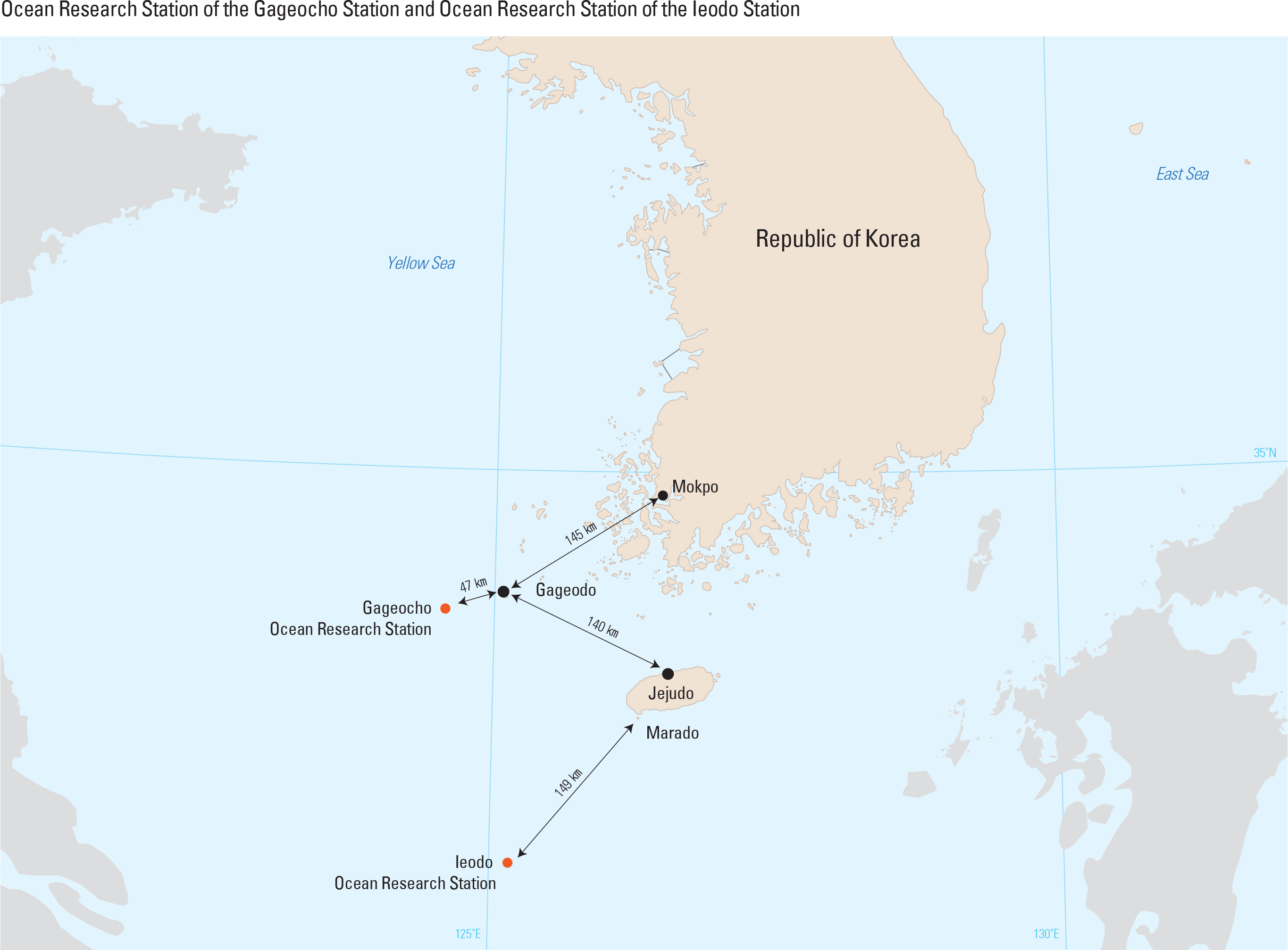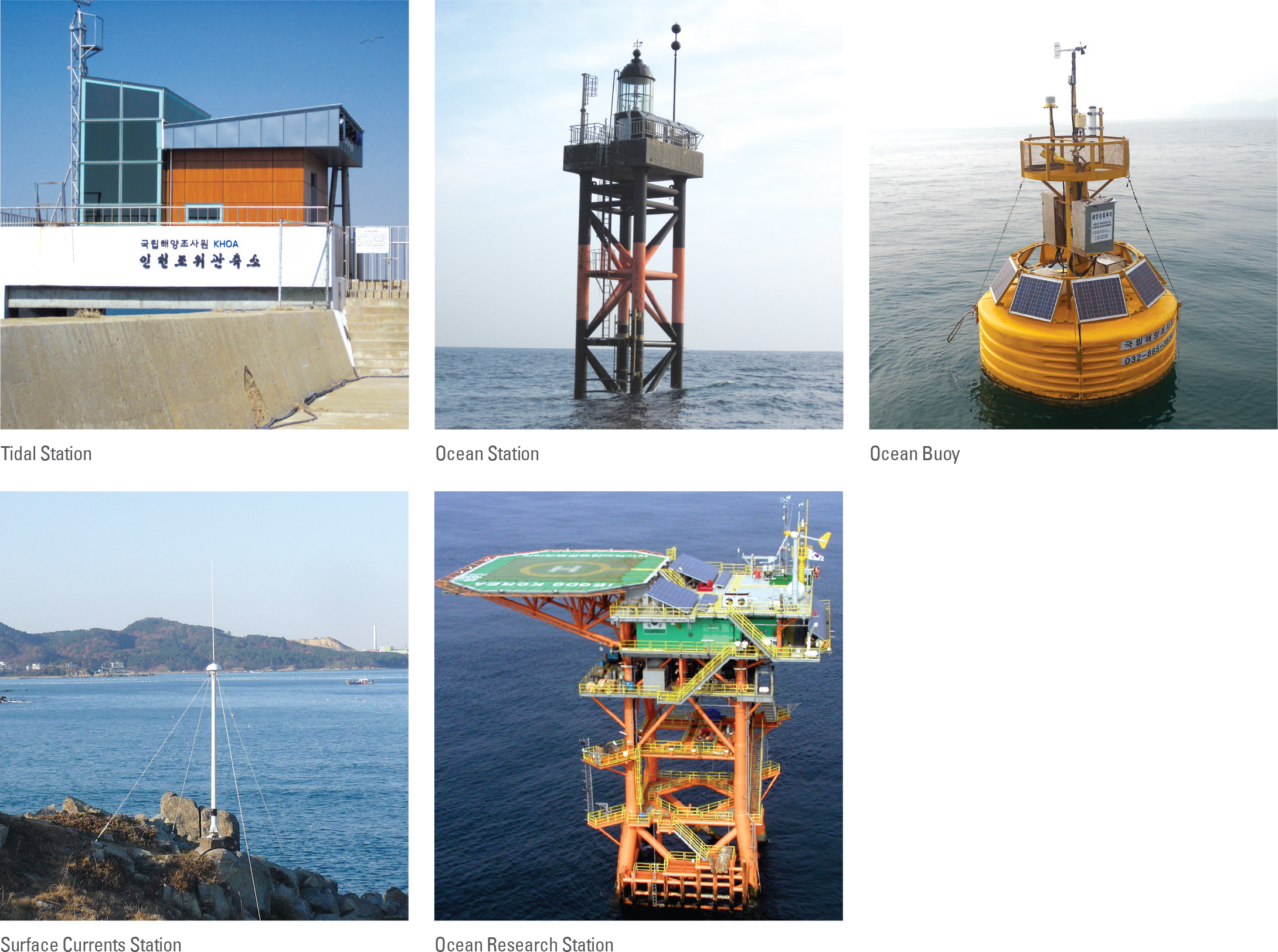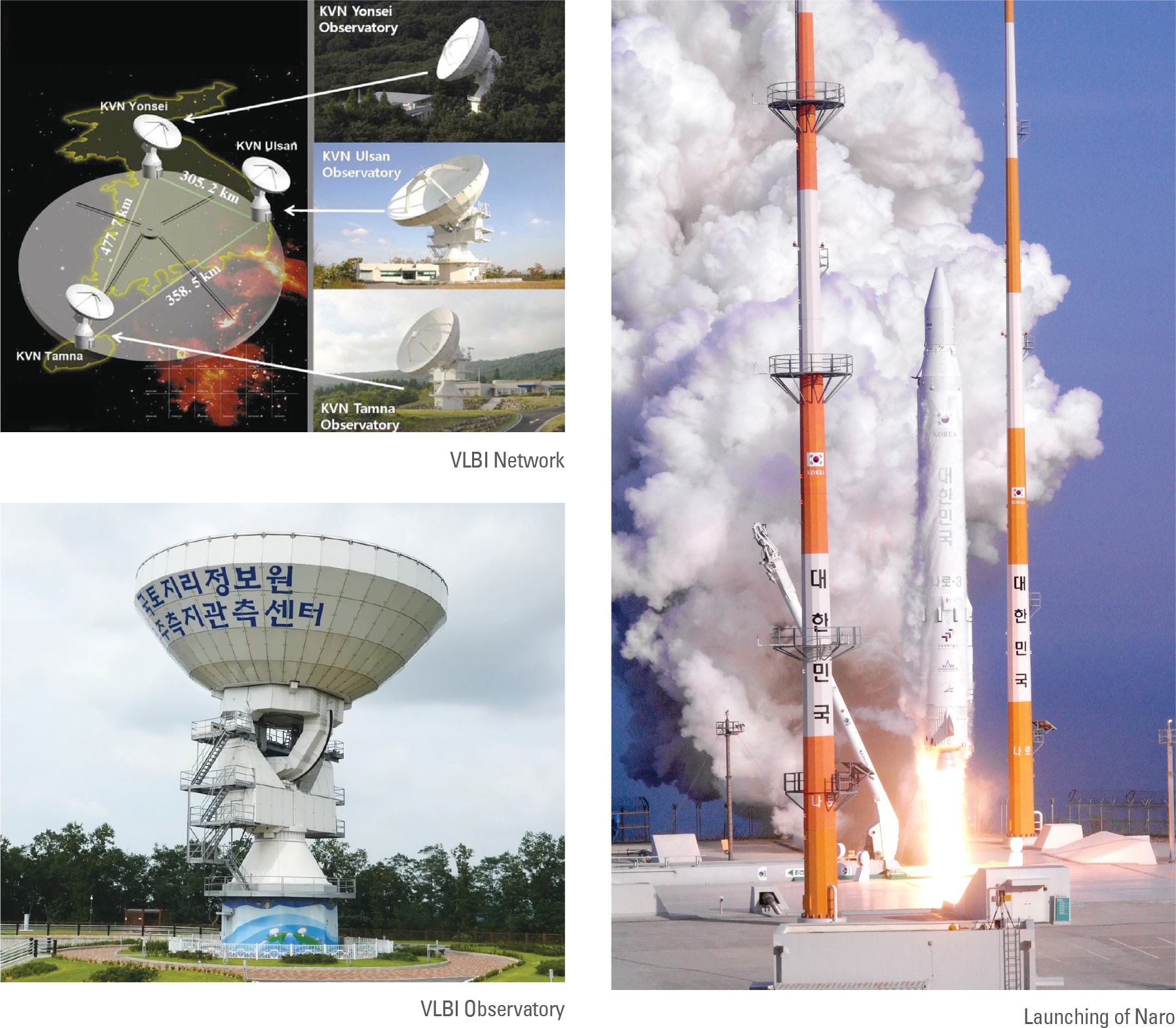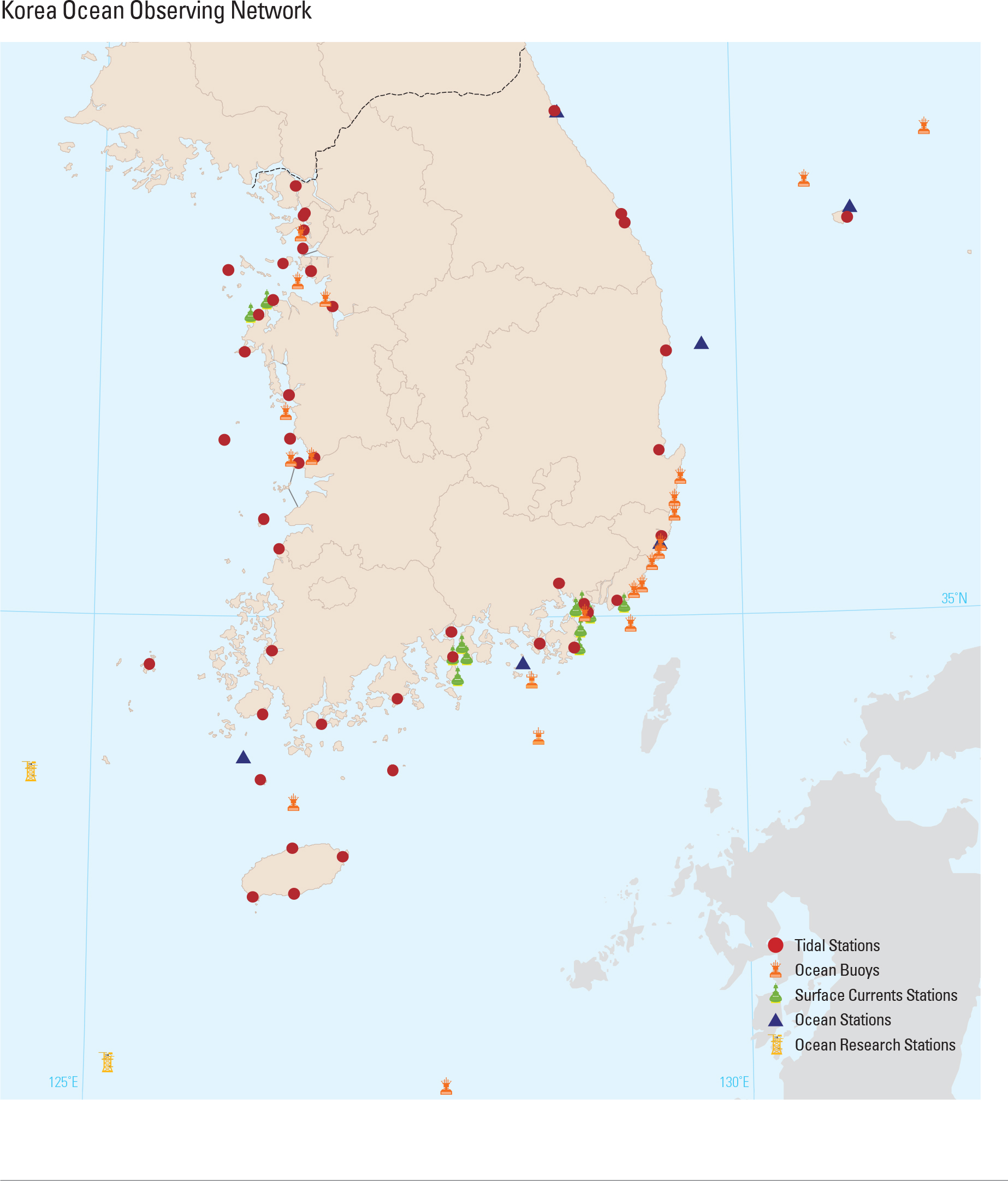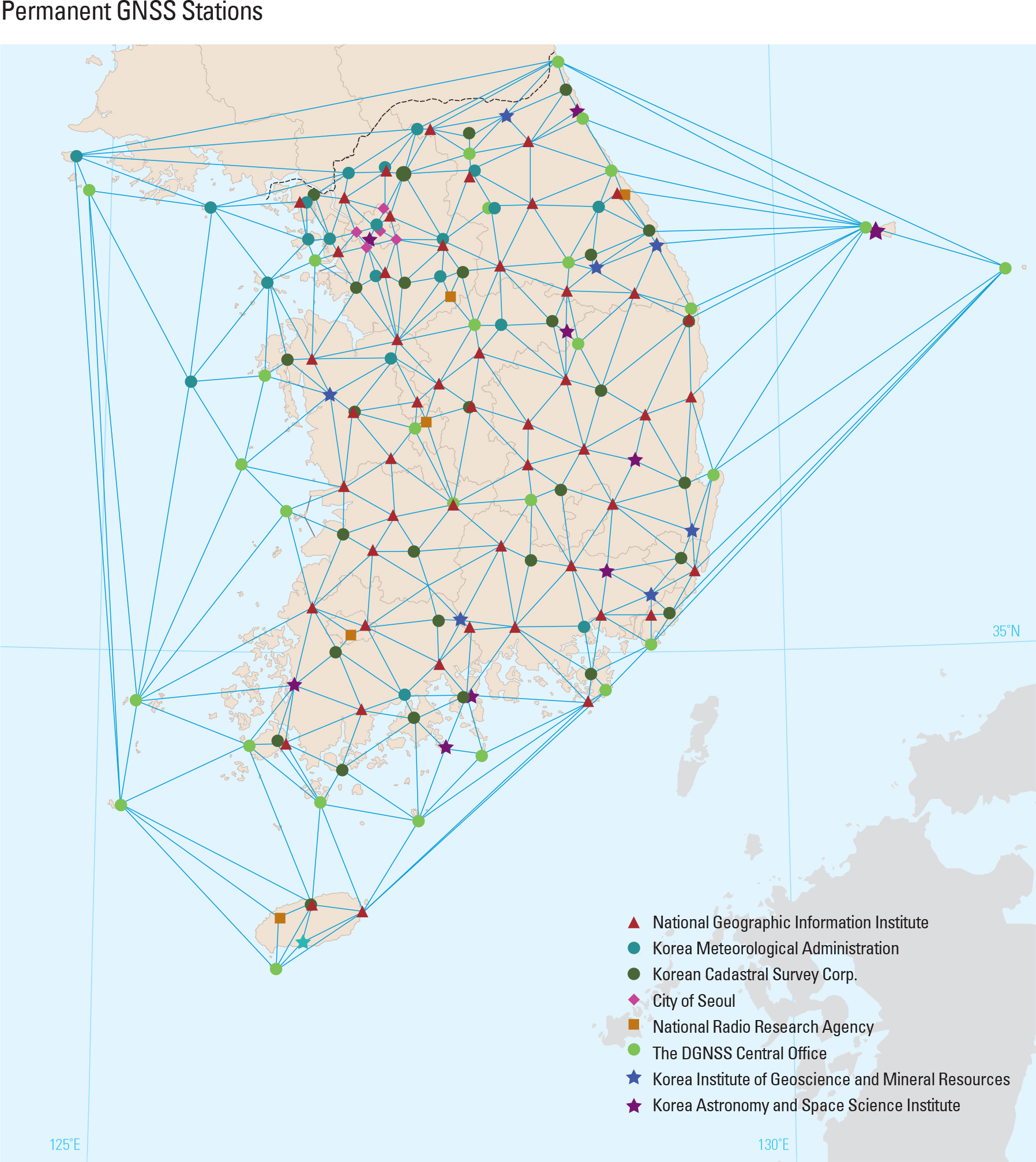Research on the waters surrounding Korea also plays an important role in relation to the nation’s territory. Korea has installed its own Ocean Observing Network (KOON) consisting of tidal stations, ocean stations, ocean buoys, surface currents stations and an ocean research station. All these stations collect, analyze, and release various collected data related to the tides, water temperatures, wave, ocean currents, and ocean weather. This information has been used for the protection of coastal environment and the maritime safety management. The Ieodo Ocean Research Station was installed to fulfill the scientific research purposes of providing real-time maritime and meteorological information, forecasting typhoons, and discovering characteristics of climate change and oceanic environments in the Northwest Pacific. The station is also a powerful symbol of Korea’s interest in the Ieodo area.
Construction of the Ieodo Ocean Research Station, Korea’s first integrated ocean research base, was completed on June 11, 2003. Built on top of a submerged rock 40 meters deep, the gross floor area of the station is 1,320 m2; its altitude above sea level is 36 m and its full height from underwater rock is 76 m. The Ieodo station (32˚ 07' 22.63'' N, 125˚ 10' 56.81'' E) is located 149 km southwest of Marado, Jeju, Korea; 276 ㎞ west of Japan’s Tori-Shima (鳥 島); 287 ㎞ northeast of China’s Sheshan Dao (余山 島). The purpose of the Station is to provide oceanic data by observing the constantly varying conditions of the ocean, weather, and its surrounding environment. In particular, since more than 60% of the typhoons that landed on the Korean Peninsula pass through the Ieodo Ocean Research Station, the station serves a crucial role in the observation, data collection, research, and forecast of typhoons. Additionally, it functions as a lighthouse that secures a safe passage of vessels, and as a frontier base for search and rescue efforts in the event of marine accidents. It is an unmanned oceanic research station with no stationed workers. It depends on the ever-abundant wind and solar power as the primary source of energy. Observed data are not only stored in the station’s server, but are communicated in real time, via satellite, to research facilities on the peninsula. As of 2014, the Ieodo Station is operated by the Korea Hydrographic and Oceanographic Administration (KHOA). The Gageocho Ocean Research Station was completed on October 13, 2009. Built on top of a submerged rock 25 meters deep, the gross floor area of the station is 286 ㎡; its altitude above sea level is 31 m and its full height from underwater rock is 46 m. The Gageocho station (33˚ 56' 30.96'' N, 124˚ 35' 34.23'' E) is located 47 ㎞ west of Korea’s Gageocho Island. Its floor space is less than a quarter of that in the Ieodo Station, but its technologically advanced systems make it ideal to serve as an important remote research station. The Gageocho Station plays the role of supporting a diverse range of research and data collection activities with observations on the atmosphere and oceanic conditions. It also supports the relevant oceanic industries such as fisheries, marine transportation, and marine leisure activities by disseminating real-time oceanic and meteorological data via the Internet. In addition, it contains a warning system that can reduce the damage caused by severe storms through its accurate oceanic and meteorological forecasts from the frontier of the nation before such storms hit the peninsula. It is also an unmanned research station with no stationed staff. Like the Ieodo Station, it harnesses the abundant wind and solar power as its operational energy. Observed data are not only stored in the station’s server, but also broadcasted in real time via satellite. Currently, the Gageocho station is operated by the Korea Institute of Science & Technology (KIOST).
